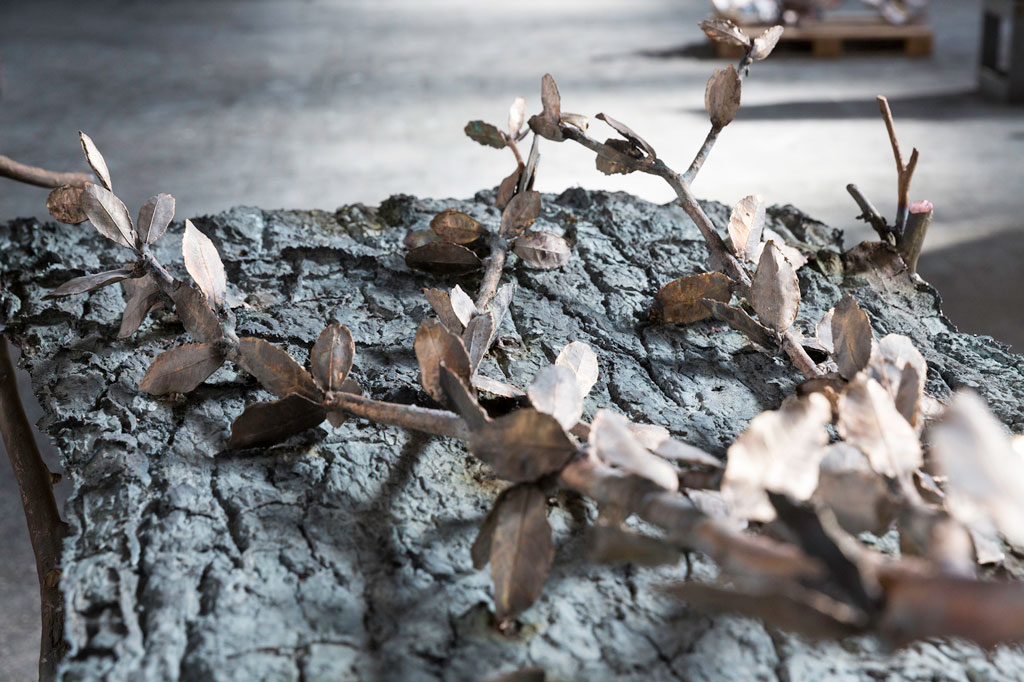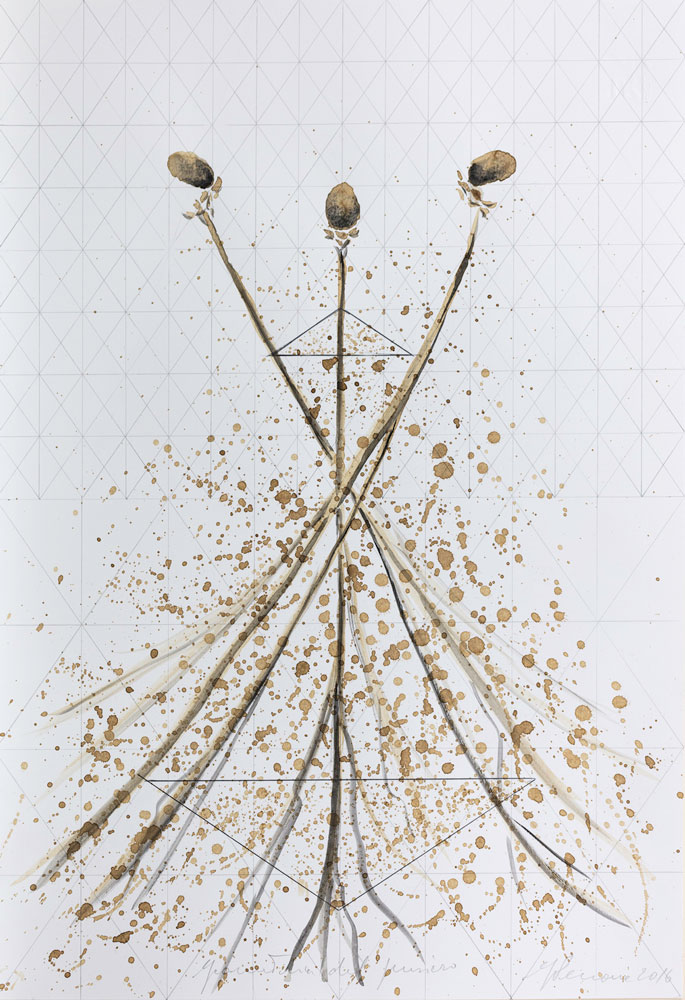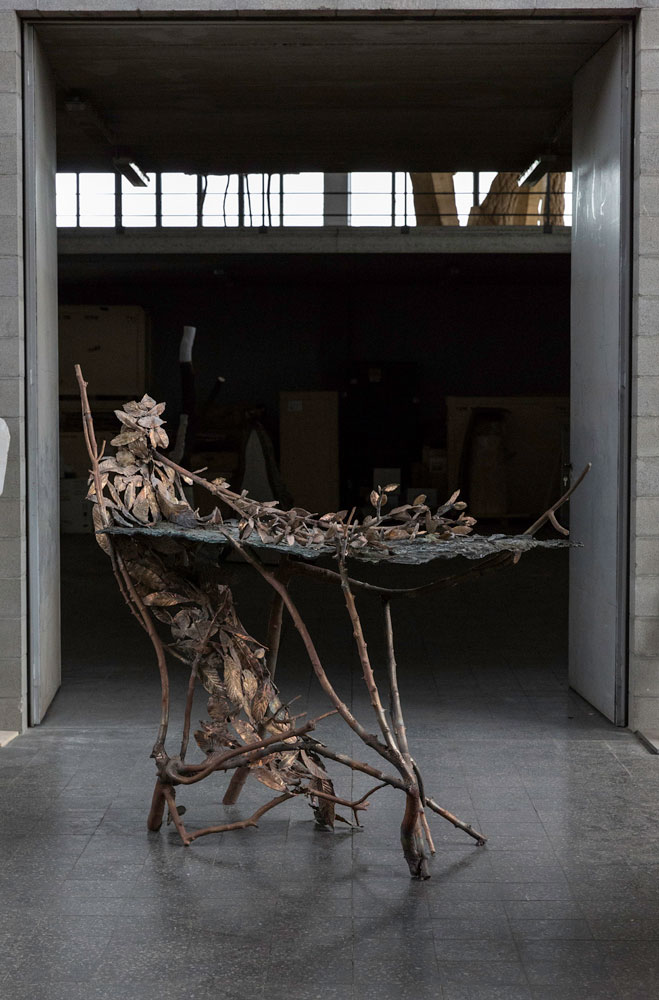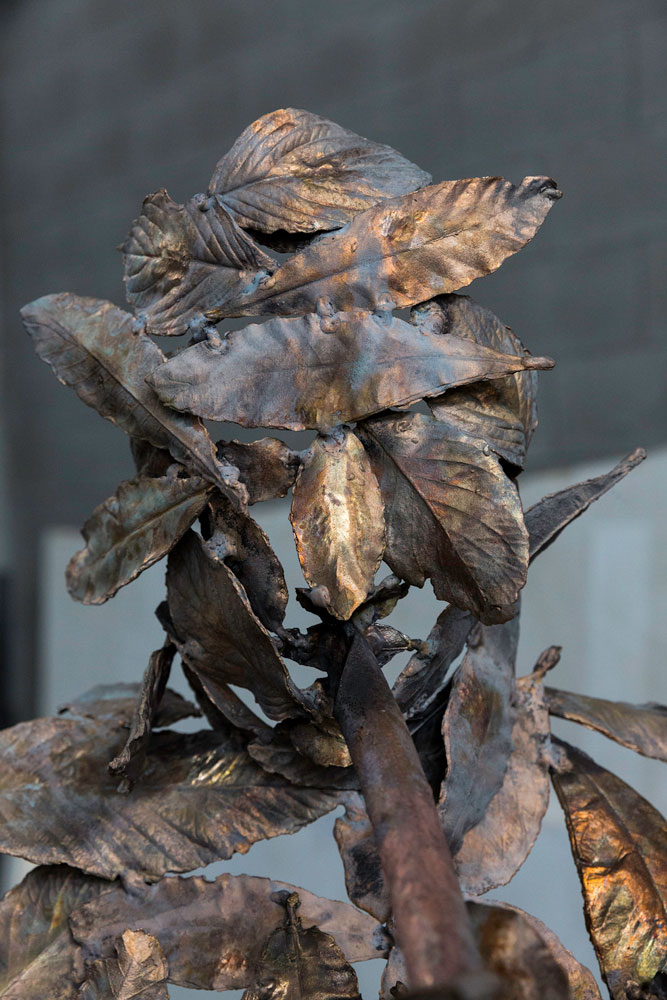ART CITIES:San Francisco-Giuseppe Penone

Giuseppe Penone uses objects from the natural world to document the intertwined relationship between humans and nature in evolution over a macroscopic, geological timeline. He was a proponent of the radical Arte Povera movement, beginning in Italy in the 1960s, which used “poor” and unconventional materials to evoke a preindustrial age and subtly critique systems of industrialization, mechanization, and art.
By Dimitris Lempesis
Photo: Gagosian
The exhibition “Foglie di bronzo” features a selection of works in bronze, stone, and marble illustrating Giuseppe Penone’s ability to seamlessly transpose human-made and naturally occurring patterns. In “Respirare l’ombra-foglie di tè” (2008), a branch-like pair of bronze lungs emerges from a metal-gridded wall of tea leaves, creating a direct link between plant respiration and the inhalation and exhalation of human breath. Freestanding sculptures such as the cast bronze foliage of “Pensieri di foglie” (2014-17) compare traces made by the artist’s hand to the weathering and degenerative marks made on plants and minerals as they are left to the elements. In a group of works on paper from 2015-16 in watercolor, coffee, and pencil, Penone further explores the points of simultaneous connection and separation posited in the organic geometries of “Pensieri di foglie”. The wall-hung marble slabs of “Corpo di pietra – rami” (2016), in which bronze twigs extend from veined white stone, suggest the slow outgrowth of one element from the other. Penone positions time as a transformative agent, using poetic, indexical mark making to minutely track involuntary processes such as respiration, growth, and aging. He blurs the distinction between human, botanical, and mineral life, giving form to their coexistence. Throughout his 50-year career, Giuseppe Penone has employed a wide range of materials and forms in an exploration of the fundamental language of sculpture. A protagonist of Arte Povera, Penone explores respiration, growth, and aging, among other involuntary processes, to create an expansive body of work including sculpture, performance, works on paper, and photography. Penone’s early performance-based works evolved in direct response to the forests near his native village of Garessio, Italy, where he interacted with trees, water, and marble. In the “Alpi Marittime” works (1968), his gestures and interventions left physical traces over extended periods of time: tree trunks were distorted by copper wire, stones, and bronze casts of the artist’s hand; mechanisms made of ropes and deer hides reacted to the weather; and casts of Penone’s face, hands, and feet were immersed in a stream bed. In 1969 Penone created the first of his “Alberi”: “stripped” trees made by carving into mature timbers and removing the wood along the outer growth rings to reveal the memory of a sapling at the core of the trunk. This ongoing series has taken on various permutations as Penone refines his techniques and experiments with different sizes and installations. In 1970 he even carved an “Albero” in the presence of an audience, merging sculpture and performance. This same year he made the “Rovesciare i propri occhi” works, in which he wore custom-made mirrored contact lenses and had himself photographed. The lenses, though they deprived the artist of his own gaze, allowed him to objectively record images, literally reflecting his surroundings. During this period Penone also began to explore different ways of documenting his work, as well as his body’s interactions with sculpture. In the “Svolgere la propria pelle” series (1970-71), he captured the intricate patterns of rock and bark, skin and hair, through frottage (taking rubbings on sheets of paper), imprints (pressing his body into surfaces), and photography. Then, with the “Soffi” works (1977- ), Penone attempted to translate into sculpture the ephemeral phenomenon of breath. He took photographs of light powder that he had blown into the air and translated the cloud-like forms into bronze sculptures, drawings, and vase-like constructions. “Essere fiume” (1981) marked an important turning point in Penone’s practice. Extracting chunks of stone or marble from the source of a river, he carved them so that they resembled the smaller, smoother stones at the bottom of the riverbed, mimicking the effects of water on the rocks’ shape and size. Then, returning to an investigation of the figure, Penone began the “Gesti vegetali” works (1982- ), hollow anthropomorphic sculptures whose forms were based on single gestures or movements. In the 1990s Penone worked on the “Anatomie” (1992- ), which included Carrara marble and other stones carved in high relief to echo vascular and muscular systems, as well as the “Propagazioni” (1995), a series of drawings based on the concentric linear patterns of a fingerprint. Since then he has continued to expand upon many of his earlier series and to work on the “Idee di pietra” sculptures (2003- ), in which he juxtaposes rocks and trees to highlight the balance between verticality and horizontality and the interplay of gravity and growth. Penone has also designed two gardens, one in Turin and one in the Reggia di Venaria in Piedmont.
Info: Gagosian Gallery, 657 Howard Street, San Francisco, Duration: 13/9-9/11/19, Days & Hours: Mon-Sat 10:00-18:00, https://gagosian.com



